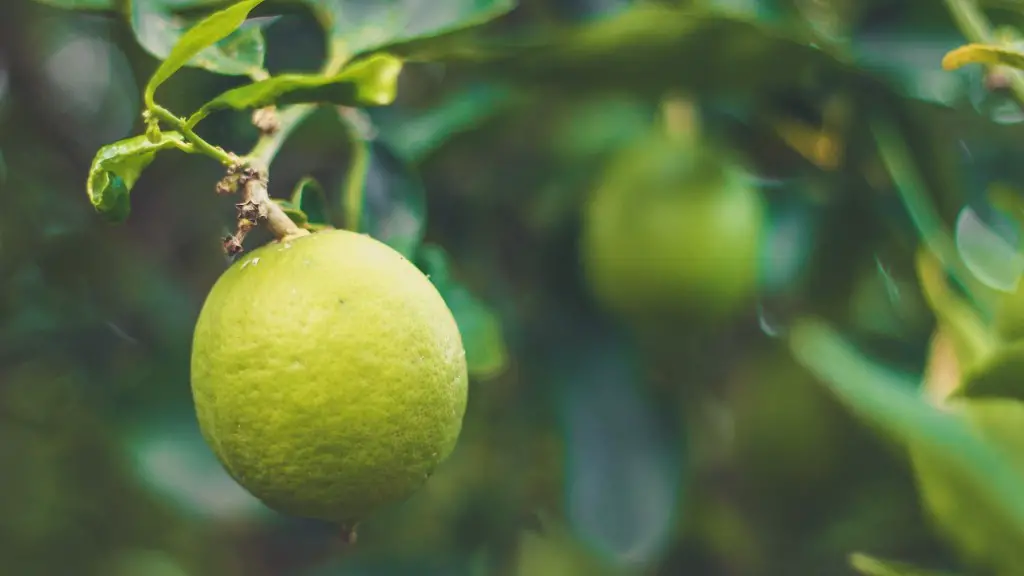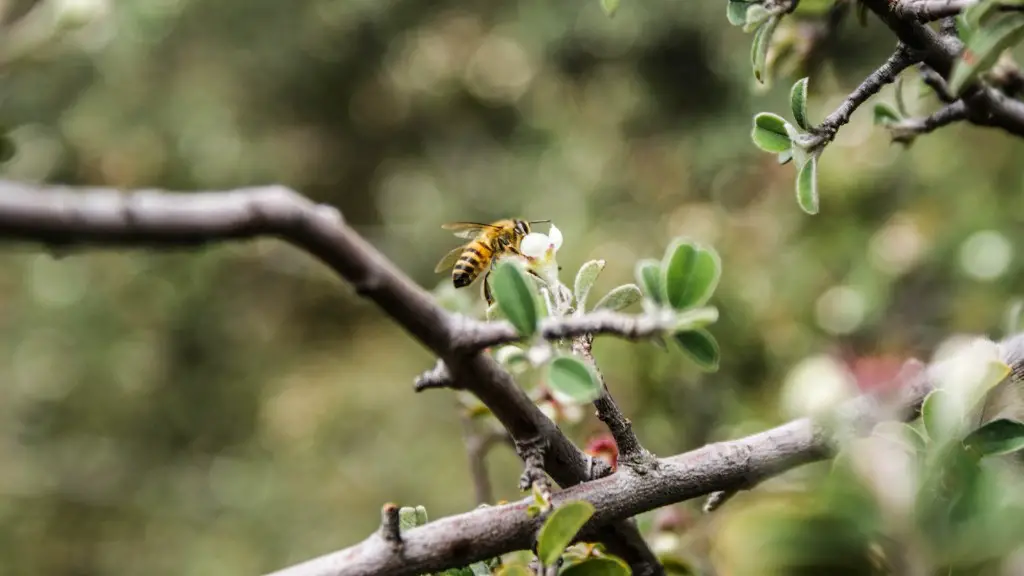The process of planting a dwarf lemon tree is not as challenging as it may seem. With the right tools and a bit of knowledge, you can create a thriving citrus tree in your garden in no time at all. Here’s what you need to know to get your tree off to a good start.
First, pick the best spot for your tree. Dwarf lemon trees prefer full sun and well-drained soil so pick a spot that meets these requirements. It’s also important to leave enough space for your tree to grow. If your tree will be in a container, pick one that’s large enough to accommodate the root system.
Once you’ve found the perfect spot, it’s time to prepare the soil. Before planting, mix a generous amount of compost into the soil to ensure it’s full of nutrients. If your soil is very heavy and clay-like, consider adding some sand or perlite to help drainage. Water the soil before planting to help it settle in the pot.
Next, it’s time to put your tree in the ground. Hold the rootball in the center of your pot and fill in the soil around it. Make sure you don’t bury it too deep, just enough to cover the roots. Then give it a good soak of water and you should be all set.
Finally, your tree needs regular care. Give it a few deep waterings a week and make sure the soil doesn’t dry out. You may also want to add some fertilizer regularly to help it thrive. With a bit of care and attention, your dwarf lemon tree should be producing lemons in no time.
Fruit Ripening
Once your dwarf lemon tree is established and producing fruit, you’ll need to monitor the ripeness. The best way to know when your fruit is at peak ripeness is to watch the color change as it ripens. The fruit will typically start green and slowly turn yellow as it matures. When the fruit is mature, you can pick it to enjoy straight away or store it for later.
Another way to determine ripeness is by tasting. Whenever the fruit has a deep, sweet flavor, that’s when you know it’s fully ripe and ready to go. A lack of flavor or tartness can indicate an unripe lemon. For the best quality, it’s best to wait until the fruit reaches full ripeness before picking.
Finally, it’s important to remember that lemons ripen off the tree. If you don’t pick the fruit as soon as it’s ripe, it will continue to ripen on the branch, possibly leading to browning or softening of the fruit over time. So make sure to check your trees regularly and pick off the ripe ones so they don’t go to waste.
Fruit Care
Once your dwarf lemon tree is producing lemons, it’s important to keep them properly cared for. The best way to maintain a healthy tree is to prune it regularly. Cut off any dead or diseased branches and trim back any branches that are overgrown. This will help your tree maintain a healthy structure and produce quality fruit.
Also, make sure to watch for pests that may be a threat to your dwarf lemon tree. Keep an eye out for signs of scale insects and spider mites that may be feeding on the leaves. If you notice any signs of infection, be sure to treat the tree with an appropriate pesticide immediately.
Finally, it’s important to give your tree plenty of water and fertilizer. A regular watering routine will ensure the tree is well-hydrated and the soil is being fed the nutrients it needs for healthy growth. Fertilizers can also be used to provide additional nutrition to the soil, giving your lemon tree an extra boost.
Harvesting Fruit
Harvesting your golden lemons is an exciting part of growing your dwarf lemon tree. When the fruit is ripe, cut it off with a sharp pair of secateurs, taking care not to damage the plant. Once it’s off the tree, don’t forget to give it a rinse with water and let it dry before eating.
When storing your lemons, it’s important to keep them away from sources of ethylene gas, like apples and bananas. These fruits release the gas which can cause your lemons to rot. So keep them in a well-ventilated container away from other produce to ensure they last as long as possible.
Finally, if you won’t be using the entire lemon immediately, you can freeze the remaining fruit for use later. Simply cut it up and store it in an airtight container for up to six months. Frozen lemons can be added to dressings, pancakes, muffins and more for a burst of fresh citrus flavor.
Pest Deterrents
Unfortunately, pests can be a nuisance to any home garden, including a dwarf lemon tree. Bugs like aphids, thrips, mites and scale insects can damage or even kill your trees, so it’s important to be vigilant in controlling them. There are a few ways you can ward off unwanted pests naturally.
First, make sure you’re cleaning up around your lemon tree, especially after pruning. Fallen leaves and flowers can attract bug, so monitor your tree regularly and discard any foliage that may be harboring insects. You can also add companion plants like mint and marigolds to help keep bugs away from your lemon tree.
You can also use natural sprays to deter pests. Neem oil, garlic, and peppermint oil are all natural remedies for many common pests. Just mix these ingredients with water and spray it around your lemon tree. Keep in mind that these remedies need to be reapplied regularly to maintain effectiveness.
Finally, keeping your lemon tree healthy and well-cared for is key in avoiding pest infestations. This means making sure it gets enough water, sun, and fertilizer. Healthy trees can better ward off pests and disease and will look much better in your garden.
Fruit Preservation
Preserving your freshly picked lemons is a great way to extend their shelf life and enjoy their delicious flavor for months to come. If you have more fruit than you need for immediate use, there are a few methods for preserving the lemons for later use.
The easiest way to preserve lemons is to freeze them whole. Wrap them individually in plastic wrap and store them in an airtight container. When you need one, just take it out of the freezer, defrost it and you’re good to go. Citrus fruits generally keep well in the freezer for up to six months.
If you’d like to preserve your lemons in a more traditional way, you can also jar them. Cut the lemons into slices and arrange them in clean jars. Cover the slices in lemon juice, seal the jars and store them in the refrigerator. The lemons should keep well for up to two months.
Drying your lemons is another easy way to preserve them. Cut the lemons into slices, spread them out on a wire rack and place them in a warm, dry spot. It can take up to five days for the lemons to completely dry out, but it’ll be worth it. Dried lemon slices can be stored in an airtight container and enjoyed for months.
Finally, you can also preserve lemons by turning them into a concentrate. Place the whole lemons in a blender, add a few tablespoons of lime juice and a pinch of salt, then run the blender until you have a thick paste. Spoon into an ice cube tray and freeze until solid. Pop the cubes out and store them in a zip-top bag in the freezer. Frozen cubes can then be thawed and added to recipes whenever you need a burst of lemon flavor.




